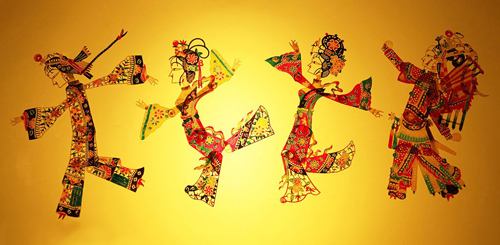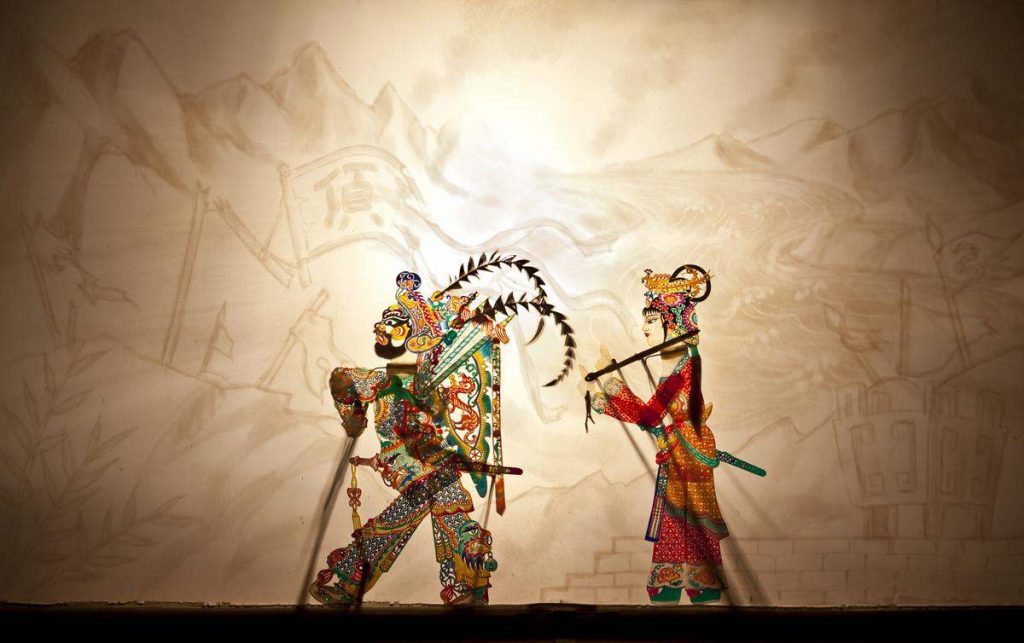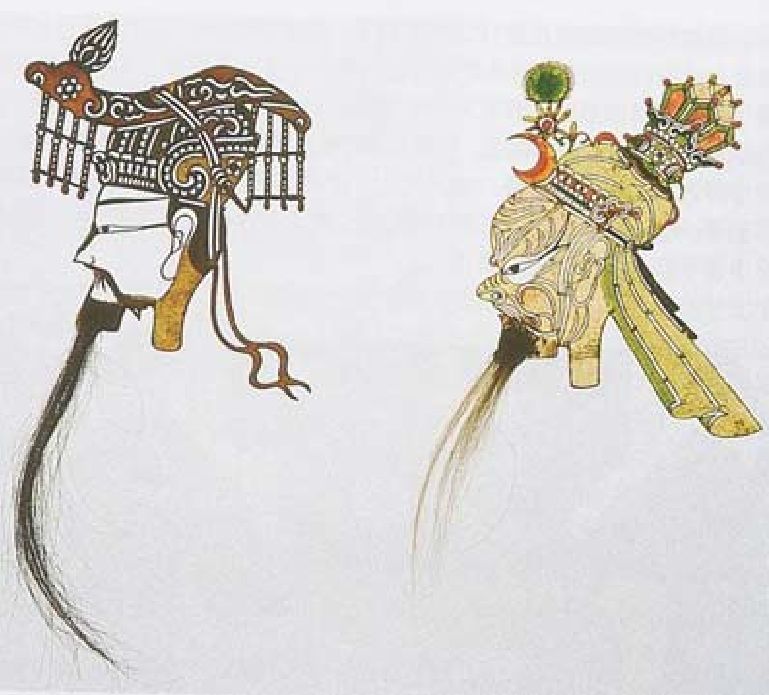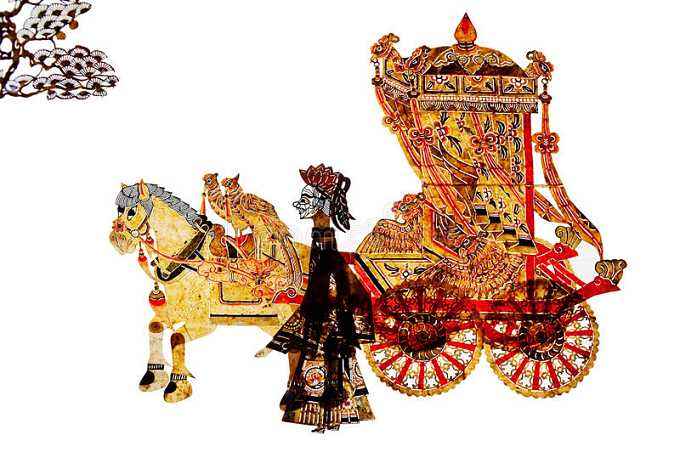Silhouette
4 min readShadow play is a popular folk opera belonging in the category of puppy show in which performers use leather or cardboard silhouettes to enact plays.A light is shone onto a screen, behind which performers operate the silhouettes while singing to the company of music. It is a form of art unique to China where folk arts and crafts are ingeniously combined with theatrical performance.

Silhouettes are similar to paper-cuts, but differ in that the hands and legs are joined with string so that they are movable. The silhouette figures were cut from cardboard at first and from donkey hide or ox-hide, sheep-hide, etc. later on. Usually a piece of hide is cut, colored, ironed and joined into a figure with nimble limbs. The tools used in making silhouette figures are rather particular about, which include five categories: knives, blades, files, drills, and prods, for shaping the head, trunk, legs, hands and feet respectively.

Silhouette in Eastern Route shadow play of Shaanxi in late-Ming Dynasty.
Beijing Western School shadow play in the early years of Qing Dynasty.Traits of different figures are emphatically depicted with meticulous carving.
The silhouette figures, vivid in shape and rich in color, are projected onto a screen.

In a performance, the operator, while singing to the accompaniment of music, manipulates the figures as the story of the play requires. To adapt to the form of screen expression, the skill of combining abstractness and reality is applied in shadow play in which scenes are made artistic, exaggerate and dramatic. Aside from screen presentation, silhouette figures can be played with hands for personal amusement, or placed on window sills as ornaments. They can be appreciated or kept as collectables.
Shadow play can be traced back to the Western Han Dynasty. Legend has it that in the reign of Emperor Wen (203-157 BC),a court lady who was playing with the crown prince in front of the window, had human figures cut from Chinese parasol leaves, which she managed to reflect on the gauze windows for fun. That is the origin of shadow play. Actually shadow play in China started from the Northern Song Dynasty and gradually prospered. According to Dream of the Eastern Capital written by Meng Yuanlao in Song Dynasty, in the capital of the Northern Song Dynasty, places of entertainment increased rapidly in number where shadow play started as a genre of folk art form among ballad-singing, comic dialogue, story-telling with drum accompaniment etc. In the capital city of Lin’ an(now Hangzhou),a shadow play troupe named “Painted-Leather Society”was established. In the third year of Zhengde under the reign of Emperor Renzong in the Ming Dynasty,a hundred-drama festival was held in Beijing in which performances were also given by shadow play operators.

In the Qing Dynasty, shadow play further developed and became popular, with more items on the program to choose from, more varieties of figures, and more meticulous in the carving skills. During the reign of Emperor Jiaqing (1786-1820), the shadow play troupes also gave performances for home celebration on New Year Day and other festivals. At that time, quite a few Peking opera actors joined in the performance of shadow play. Since the mid-Qing Dynasty, types of facial makeup such as sheng(male role), dan(female role), jing (painted-face role), mo (elderly male role) and chou(role of clown) appeared in shadow play, as learned from Peking Opera.
Qing-dynasty Shaanxi Eastern Route shadow play Fengyi Pavilion is extremely exquisite with the richly ornamented arbors, pavilions, terraces, etc.
Shadow play The Story of White Snake in Qing Dynasty, Tangshan, Hebei.
The shadow play is commonly seen in rural areas in North China and the provinces of Sichuan, Hu’ nan and Hubei, where different local schools were formed each with rich local flavor of their own among which some outstanding ones are the Shaanxi shadow, Tangshan shadow and Longdong shadow.
The shadow play in Shaanxi is plain and simple in figure shape, exquisite in workmanship and very decorative. It is subdivided into two factions: the eastern route and the western route. The eastern route silhouette figures are small in statue, characterized by delicacy and ingenuity, whereas the western route ones force and plainness.
The Tangshan shadow play is one of the important branches in which the figures are carved from donkey hide and separated into six parts joined with iron wire and silk thread so that they are easy to be turned round. Besides, as three sticks are fixed on each figure, the puppet can be made to move deftly like people in real life.
Qing-dynasty shadow play: Prince White Dragon.
The Gansu Longdong shadow play became popular as early as the dynasties of Ming and Qing. Its figures appear exaggerated with a large head and a small trunk, upper half narrower than the lower, arms reaching down over knees. The coloring of facial make-up is basically the same as that of Shaanxi opera, that is, black color symbolizing loyalty, white treachery, red upright, painted bravery, blank honesty.
Other properties such as tables, beds, animals, plants, etc. are made a bit vague so as to make the chief figures prominent. In preparing silhouette figures the hide of young black ox is chosen as material. First draw a draft on the hide, and then carve with different types of cutting tools, and then color with transparent coloring agents which are not blended. The last step is ironing, which is the most important as well as difficult part. The silhouette figures so prepared, when dried in the air, can be arranged for performance on the stage.








